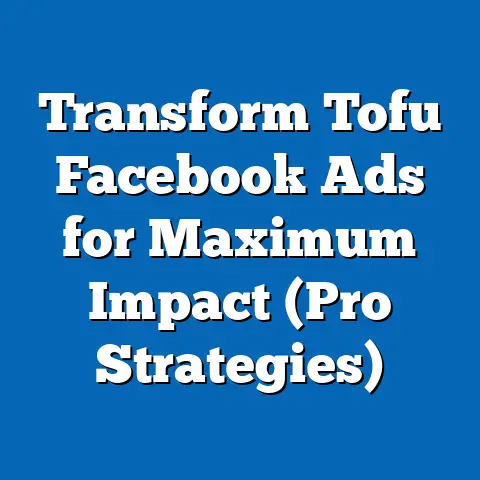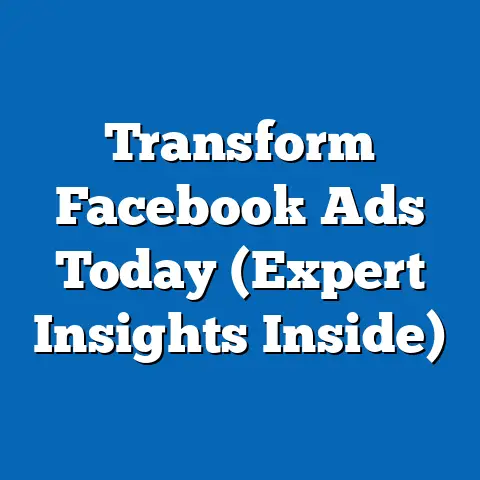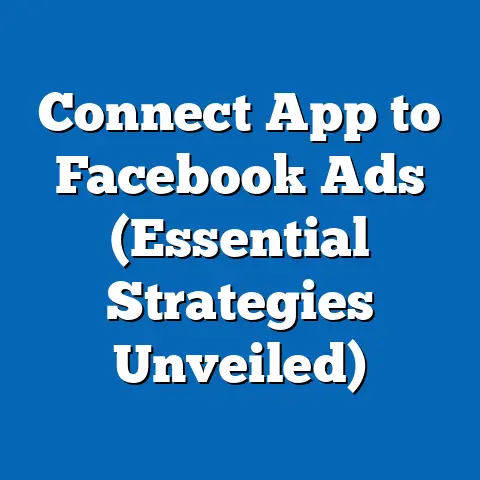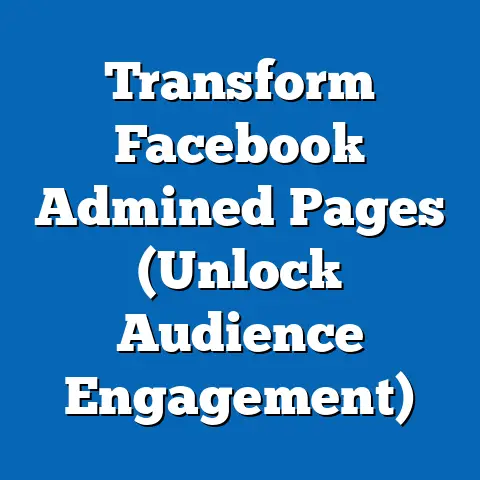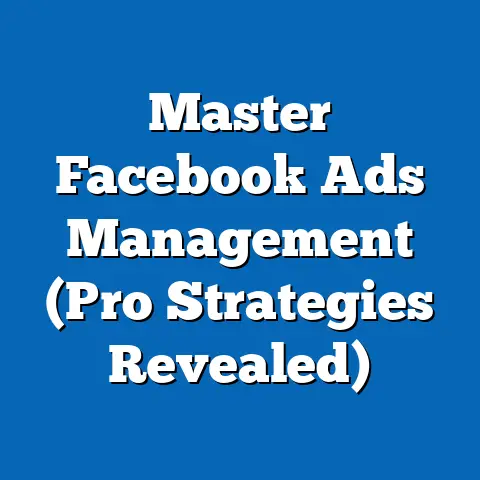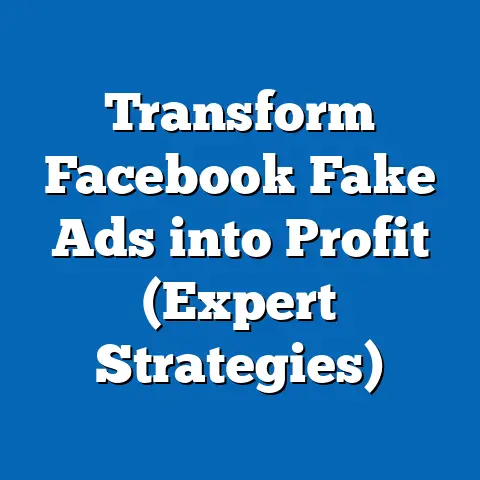Mastering Average CPC for Facebook Ads (2025 Insights Unveiled)
“Higher CPC always leads to better ad performance.” This is a myth I’ve encountered countless times in my years navigating the ever-shifting landscape of Facebook advertising. It’s a seductive idea – that simply throwing more money at a campaign will automatically yield better results. But like most things in the digital marketing world, the reality is far more nuanced. This belief often leads advertisers down a rabbit hole of inflated budgets and disappointing returns. The truth is, a high CPC without a corresponding increase in conversions or engagement is simply wasted money. Understanding the intricacies of CPC, its influencing factors, and how to strategically manage it is key to unlocking truly effective and profitable Facebook ad campaigns. In this guide, I’ll be diving deep into the world of Average Cost Per Click (CPC) on Facebook, arming you with the knowledge and strategies you need to navigate the 2025 advertising landscape and beyond.
Understanding Average CPC
Average Cost Per Click (CPC) is a fundamental metric in the world of Facebook advertising. It represents the average amount you pay each time someone clicks on your ad. Think of it as the price you pay to bring a potential customer to your website, landing page, or app.
How CPC is Calculated
The calculation itself is quite simple:
Average CPC = Total Ad Spend / Total Number of Clicks
For example, if you spend $100 on a Facebook ad campaign and receive 50 clicks, your average CPC would be $2.
However, the simplicity of the calculation belies the complexity of the factors that influence it. Facebook’s ad auction system is a dynamic environment where numerous variables interact to determine the final CPC. These variables include:
- Your Bid: The maximum amount you’re willing to pay for a click.
- Ad Quality & Relevance: Facebook’s assessment of your ad’s appeal and usefulness to the target audience.
- Estimated Action Rate: Facebook’s prediction of how likely your ad is to lead to desired actions (e.g., conversions, leads).
- Audience Targeting: The specificity and competitiveness of your chosen audience.
- Ad Placement: Where your ad appears (e.g., Facebook News Feed, Instagram Stories).
- Competition: The number of other advertisers bidding for the same audience.
- Ad Scheduling: The times of day and days of the week your ads are shown.
All these factors come together to create a dynamic auction where Facebook strives to deliver the most relevant and engaging ads to its users while maximizing its own revenue.
Why Average CPC Matters
Understanding your Average CPC is vital for several reasons:
- Measuring Ad Performance: CPC provides a clear indication of how efficiently your ads are driving traffic. A high CPC might signal that your ad creative is not resonating with your audience, your targeting is too broad, or your ad quality is low.
- Return on Investment (ROI): CPC is a crucial component in calculating your overall ROI. Knowing how much you’re paying for each click allows you to determine whether your advertising efforts are profitable. For instance, if your CPC is $2, and you need 10 clicks to generate one sale, your customer acquisition cost is $20. You then need to ensure that the profit margin on your product or service exceeds $20 for your campaign to be profitable.
- Budget Allocation: Monitoring your CPC helps you allocate your budget effectively. If one ad set consistently delivers a lower CPC than another, it might make sense to shift more of your budget towards the higher-performing ad set.
- A/B Testing: CPC is a key metric to track when A/B testing different ad creatives, targeting options, or bidding strategies. By comparing the CPC of different variations, you can identify which elements are most effective at driving clicks at the lowest cost.
Takeaway: Average CPC is a critical metric for understanding the efficiency and profitability of your Facebook ad campaigns. By understanding how it’s calculated and the factors that influence it, you can make informed decisions to optimize your ad performance and maximize your ROI.
Historical Context and Evolution
The landscape of Facebook advertising, and consequently, its CPC trends, has undergone a dramatic evolution since the platform first introduced ads. To truly understand the current state of CPC in 2025, it’s helpful to take a brief journey through its history.
Early Days: Low Costs, Limited Targeting
In the early days of Facebook advertising, costs were incredibly low. I remember launching campaigns for pennies per click. The targeting options, however, were rudimentary. It was largely based on basic demographics and interests, which led to a lot of wasted ad spend reaching irrelevant users.
The Rise of Sophisticated Targeting
As Facebook matured, so did its advertising platform. The introduction of custom audiences, lookalike audiences, and detailed targeting options revolutionized the game. Advertisers could now reach highly specific segments of the population, leading to improved ad relevance and engagement. This, in turn, started to drive up CPCs as more advertisers competed for the same, high-value audiences.
Algorithm Updates and User Behavior Shifts
Facebook’s algorithm has been in a constant state of flux. Algorithm updates, such as the shift towards prioritizing “meaningful interactions” in the News Feed, have had a significant impact on ad visibility and CPC. When organic reach declined, advertisers had to rely more heavily on paid advertising, further increasing competition and driving up costs.
Changes in user behavior have also played a crucial role. As users have become more accustomed to seeing ads on Facebook, they’ve become more discerning about what they click on. This means advertisers need to create more compelling and relevant ad content to capture attention and drive clicks. The rise of mobile advertising, with its smaller screen sizes and shorter attention spans, has also forced advertisers to adapt their strategies.
2025 and Beyond: The Era of Personalization and Automation
In 2025, we’re seeing a continued emphasis on personalization and automation. Facebook’s AI-powered ad delivery system is becoming increasingly sophisticated, allowing advertisers to target users with hyper-relevant ads based on their individual interests, behaviors, and purchase history. This level of personalization has the potential to both lower CPCs (by improving ad relevance) and increase them (by intensifying competition for the most valuable users).
Takeaway: Understanding the historical context of CPC trends on Facebook provides valuable insights into the factors that are shaping the current advertising landscape. By recognizing how algorithm updates, user behavior shifts, and the evolution of targeting options have impacted CPC, you can better anticipate future trends and adapt your strategies accordingly.
Key Factors Influencing Average CPC in 2025
In 2025, several key factors are influencing the Average CPC on Facebook, and it’s crucial to understand each of these to manage your advertising costs effectively.
1. Audience Targeting
- Impact of Demographic and Interest-Based Targeting: The more specific your audience, the higher the potential CPC. Targeting a niche audience with highly specialized interests means you’re likely competing with fewer advertisers, but those advertisers are also likely very focused on that same audience. Conversely, broad targeting might yield a lower CPC, but you risk reaching a large number of irrelevant users, leading to a lower conversion rate.
- Custom Audiences and Lookalike Audiences: Custom audiences (based on your existing customer data) and lookalike audiences (based on the characteristics of your best customers) can be incredibly effective at driving down CPC. These audiences are typically more engaged and likely to convert, making them highly valuable. I’ve seen custom audiences consistently outperform broad targeting in terms of CPC and ROI.
- Detailed Targeting Options: Facebook’s detailed targeting options (based on interests, behaviors, demographics, and more) offer a powerful way to reach specific segments of the population. However, over-layering too many targeting criteria can actually increase your CPC by limiting your audience size and making it harder for Facebook’s algorithm to find relevant users.
2. Ad Quality and Relevance
- Relevance Score: Facebook assigns a “relevance score” to your ads based on how well they resonate with your target audience. A higher relevance score typically translates to a lower CPC. Factors that contribute to a high relevance score include:
- Engaging Ad Creative: High-quality images, videos, and compelling ad copy.
- Clear Value Proposition: Communicating the benefits of your product or service clearly and concisely.
- Relevant Call to Action: Encouraging users to take the desired action (e.g., “Learn More,” “Shop Now,” “Sign Up”).
- Negative Feedback: Ads that receive negative feedback (e.g., users hiding the ad or reporting it as spam) will see their relevance score plummet and their CPC increase. It’s crucial to monitor your ad performance and address any negative feedback promptly.
- Engaging Ad Creative: High-quality images, videos, and compelling ad copy.
- Clear Value Proposition: Communicating the benefits of your product or service clearly and concisely.
- Relevant Call to Action: Encouraging users to take the desired action (e.g., “Learn More,” “Shop Now,” “Sign Up”).
3. Competition
- Market Saturation: In highly competitive industries, such as e-commerce or finance, you can expect to pay a higher CPC. The more advertisers bidding for the same audience, the higher the auction price will be.
- Bidding Strategies: Your bidding strategy also plays a significant role in determining your CPC. Facebook offers several bidding options, including:
- Lowest Cost Bidding: Facebook automatically bids to get you the lowest possible cost per result.
- Cost Cap Bidding: You set a target cost per result, and Facebook bids to stay within that target.
- Bid Cap Bidding: You set a maximum bid amount, and Facebook will never bid higher than that amount.
- Target Cost Bidding: You tell Facebook the average cost you’re aiming for, and it bids to get you as close to that target as possible.
- Understanding the Auction: The Facebook ad auction is a complex, real-time process. To succeed, you need to understand how the auction works and how your bidding strategy impacts your CPC.
- Lowest Cost Bidding: Facebook automatically bids to get you the lowest possible cost per result.
- Cost Cap Bidding: You set a target cost per result, and Facebook bids to stay within that target.
- Bid Cap Bidding: You set a maximum bid amount, and Facebook will never bid higher than that amount.
- Target Cost Bidding: You tell Facebook the average cost you’re aiming for, and it bids to get you as close to that target as possible.
4. Seasonal Trends
- Holidays and Events: CPC rates tend to spike during major holidays and events, such as Black Friday, Christmas, and Valentine’s Day. This is because more advertisers are vying for attention during these periods.
- Industry-Specific Trends: Certain industries may experience seasonal fluctuations in CPC. For example, travel companies might see a surge in CPC during the summer months, while retailers might see a peak during the holiday season.
Case Study Example
Let’s say you’re running an ad for a new line of organic skincare products.
- Poor Strategy: If you target a broad audience with generic interests like “beauty” and “skincare,” your CPC might be relatively low, but your conversion rate will likely be abysmal.
- Better Strategy: If you target a custom audience of existing email subscribers and a lookalike audience based on your top-spending customers, your CPC might be higher, but your conversion rate will be significantly better.
- Best Strategy: You further refine your targeting by layering in detailed targeting options like “organic skincare,” “cruelty-free beauty,” and “eco-conscious consumers.” You also create high-quality ad creative that highlights the unique benefits of your products and includes a clear call to action. This combination of targeted audience and relevant ad content will likely result in a lower CPC and a higher ROI.
Takeaway: Mastering Average CPC in 2025 requires a holistic approach that considers audience targeting, ad quality, competition, and seasonal trends. By optimizing each of these factors, you can significantly reduce your advertising costs and improve your overall ROI.
Analyzing CPC Trends in 2025
As we move further into 2025, it’s essential to analyze the current statistics and trends related to Average CPC on Facebook to stay ahead of the curve. While specific numbers can fluctuate based on industry, location, and targeting, there are some overarching patterns to consider.
Current Statistics and Trends
- Increased Competition: The overall trend continues to point towards increased competition on the Facebook advertising platform. More businesses are recognizing the power of Facebook ads, leading to a higher demand for ad space and, consequently, higher CPCs.
- Mobile Dominance: Mobile advertising continues to dominate the landscape. With the majority of Facebook users accessing the platform on their mobile devices, advertisers are allocating a larger portion of their budgets to mobile-optimized campaigns.
- Video Ads: Video ads are proving to be increasingly effective at capturing attention and driving engagement. However, producing high-quality video content can be more expensive than creating static images, which can impact your overall ad spend.
- AI-Powered Optimization: Facebook’s AI-powered ad delivery system is becoming more sophisticated, allowing advertisers to automate many aspects of their campaigns. While this can save time and improve efficiency, it also requires a deeper understanding of how the algorithm works.
- Privacy Concerns: Increased awareness of data privacy is impacting the way advertisers target users. Changes to data tracking policies and increased scrutiny from regulatory bodies are forcing advertisers to find new and innovative ways to reach their target audiences.
Comparison with Previous Years
Comparing CPC trends in 2025 with previous years reveals some interesting patterns. In general, CPCs have been steadily increasing over time, driven by factors such as increased competition, algorithm updates, and changes in user behavior. However, the rate of increase has slowed down in recent years, as advertisers have become more sophisticated in their targeting and optimization efforts.
Implications for Advertisers and Marketers
These trends have several important implications for advertisers and marketers:
- Focus on Relevance: In an increasingly competitive landscape, relevance is more important than ever. Advertisers need to create highly targeted and engaging ad content that resonates with their specific audience.
- Embrace Automation: Facebook’s AI-powered tools can help you automate many aspects of your campaigns, but it’s crucial to understand how these tools work and how to use them effectively.
- Stay Informed: The Facebook advertising landscape is constantly evolving. It’s essential to stay informed about the latest trends, algorithm updates, and best practices to stay ahead of the competition.
- Diversify Your Strategy: Don’t rely solely on Facebook ads. Explore other marketing channels, such as SEO, email marketing, and content marketing, to diversify your reach and reduce your dependence on paid advertising.
Takeaway: Analyzing CPC trends in 2025 provides valuable insights into the current state of the Facebook advertising landscape. By understanding these trends and their implications, you can make informed decisions to optimize your campaigns and achieve your marketing goals.
Case Studies of Successful CPC Management
While theoretical knowledge is valuable, real-world examples of successful CPC management can provide practical inspiration and guidance. Here are a few hypothetical case studies of brands that have effectively managed their Average CPC in 2025.
Case Study 1: E-commerce Brand – “EcoChic Apparel”
- Challenge: EcoChic Apparel, an online retailer selling sustainable clothing, faced rising CPCs due to increased competition in the ethical fashion market.
- Strategy:
- Refined Audience Targeting: They segmented their audience based on purchase history, website behavior, and interests in sustainable living.
- High-Quality Video Ads: They created engaging video ads showcasing the craftsmanship and ethical sourcing of their clothing.
- A/B Testing: They continuously A/B tested different ad creatives, targeting options, and bidding strategies to identify the most effective combinations.
- Results:
- Reduced CPC by 20% within three months.
- Increased conversion rate by 15%.
- Improved overall ROI by 25%.
- Refined Audience Targeting: They segmented their audience based on purchase history, website behavior, and interests in sustainable living.
- High-Quality Video Ads: They created engaging video ads showcasing the craftsmanship and ethical sourcing of their clothing.
- A/B Testing: They continuously A/B tested different ad creatives, targeting options, and bidding strategies to identify the most effective combinations.
- Reduced CPC by 20% within three months.
- Increased conversion rate by 15%.
- Improved overall ROI by 25%.
Case Study 2: SaaS Company – “ProductivityPro”
- Challenge: ProductivityPro, a software company offering productivity tools, struggled to generate leads at a reasonable CPC due to the broad nature of their target audience.
- Strategy:
- Custom Audience Segmentation: They segmented their audience based on job titles, industry, and company size.
- Lead Magnet: They created a valuable lead magnet (a free e-book) to attract potential customers.
- LinkedIn Integration: They integrated their Facebook ads with LinkedIn to target professionals with specific job titles and skills.
- Results:
- Reduced CPC by 30% within two months.
- Increased lead generation by 40%.
- Improved customer acquisition cost by 20%.
- Custom Audience Segmentation: They segmented their audience based on job titles, industry, and company size.
- Lead Magnet: They created a valuable lead magnet (a free e-book) to attract potential customers.
- LinkedIn Integration: They integrated their Facebook ads with LinkedIn to target professionals with specific job titles and skills.
- Reduced CPC by 30% within two months.
- Increased lead generation by 40%.
- Improved customer acquisition cost by 20%.
Case Study 3: Local Restaurant – “Taste of Italy”
- Challenge: Taste of Italy, a local Italian restaurant, wanted to attract more customers and increase reservations but faced limited budget and high competition from other restaurants.
- Strategy:
- Hyperlocal Targeting: They targeted Facebook users within a 5-mile radius of their restaurant.
- Limited-Time Offers: They created limited-time offers and discounts to incentivize customers to visit.
- User-Generated Content: They encouraged customers to share photos of their meals on social media and used this user-generated content in their ads.
- Results:
- Reduced CPC by 15% within one month.
- Increased restaurant reservations by 25%.
- Improved brand awareness and engagement in the local community.
- Hyperlocal Targeting: They targeted Facebook users within a 5-mile radius of their restaurant.
- Limited-Time Offers: They created limited-time offers and discounts to incentivize customers to visit.
- User-Generated Content: They encouraged customers to share photos of their meals on social media and used this user-generated content in their ads.
- Reduced CPC by 15% within one month.
- Increased restaurant reservations by 25%.
- Improved brand awareness and engagement in the local community.
Takeaway: These case studies demonstrate that successful CPC management requires a strategic approach that combines refined audience targeting, high-quality ad creative, continuous A/B testing, and a deep understanding of your target audience.
The Future of CPC in Facebook Advertising
Looking beyond 2025, the future of Average CPC in Facebook advertising is likely to be shaped by several key factors.
Potential Innovations in Advertising Technology
- AI-Powered Optimization: We can expect to see even more sophisticated AI-powered tools that automate and optimize various aspects of Facebook ad campaigns, including bidding, targeting, and ad creative.
- Augmented Reality (AR) Ads: AR ads offer a more immersive and engaging advertising experience, allowing users to interact with products in a virtual environment.
- Personalized Video Ads: Personalized video ads that are tailored to individual users based on their interests, behaviors, and purchase history could become more prevalent.
Changes in User Behavior
- Increased Privacy Awareness: As users become more aware of data privacy, they may be less willing to share their personal information with advertisers, making it more challenging to target specific audiences.
- Ad Fatigue: Users may become increasingly resistant to traditional ad formats, requiring advertisers to find new and innovative ways to capture their attention.
- Shift to Emerging Platforms: Some users may migrate to emerging social media platforms, reducing the reach and effectiveness of Facebook ads.
Shifts in Platform Policies
- Data Privacy Regulations: Stricter data privacy regulations, such as GDPR and CCPA, could limit the amount of data that advertisers can collect and use for targeting purposes.
- Ad Transparency Initiatives: Facebook may introduce new initiatives to increase ad transparency and accountability, requiring advertisers to disclose more information about their targeting practices.
- Algorithm Updates: Facebook’s algorithm will continue to evolve, potentially impacting ad visibility, reach, and CPC.
Takeaway: The future of CPC in Facebook advertising is uncertain, but by staying informed about potential innovations in advertising technology, changes in user behavior, and shifts in platform policies, you can prepare for the challenges and opportunities that lie ahead.
Call to Action:
Now it’s your turn! Share your experiences and insights regarding CPC management in Facebook ads in the comments below. What strategies have worked for you? What challenges have you faced? Let’s learn from each other and help each other succeed in the ever-evolving world of Facebook advertising.

